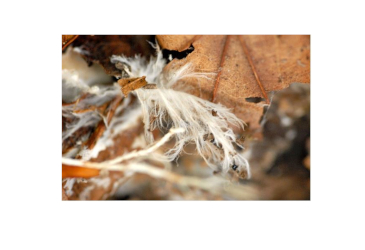- Series:Plants, Transcript English
If it weren’t for mushrooms, there would be so many un-decayed dead trees that there would be no room on Earth for anything else to grow. But mushrooms don’t just recycle dead trees. They help make the trees grow in the first place.

The mushrooms that we see are merely the part of the fungus that produces the fruit. Most of the mushroom is unseen. If you were to peel back the bark of a decaying tree, you’ll see white tissue called mycelia. That is the main part of the mushroom plant. Many species of mushrooms combine efforts to help trees grow. Their mycelium forms a sheath around tree roots that help to deliver water and nutrients. In return, they get excess sugar produced by the tree. This relationship is so close that both the fungi and the tree depend upon each other. For example, researchers estimate that the Douglas Fir has about 1,000 species of fungus working together for its support. The fungi will even form underground mycelial networks to move nutrients between different kinds of tree.
Clearly, God has designed a finely balanced partnership between trees and fungi for their mutual survival. In the Old Testament, God punished His people through the loss of their planted crops. Is it just possible He tipped the fine balance of other such partnerships to do His bidding?
Joel 1:17
“The seed is rotten under their clods, the garners are laid desolate, the barns are broken down; for the corn is withered.”
Prayer: Father, thank You for the beauty of trees and for the tree on which our Lord died to take away our sins. Amen.
Ref: Discover, 2005, pp. 48-53, Greg Mueller, “Dr. Mushroom.” See also: Photo:Mycelium by James Lindsey CC BY SA 3.0
© 2024 Creation Moments. All rights reserved.
